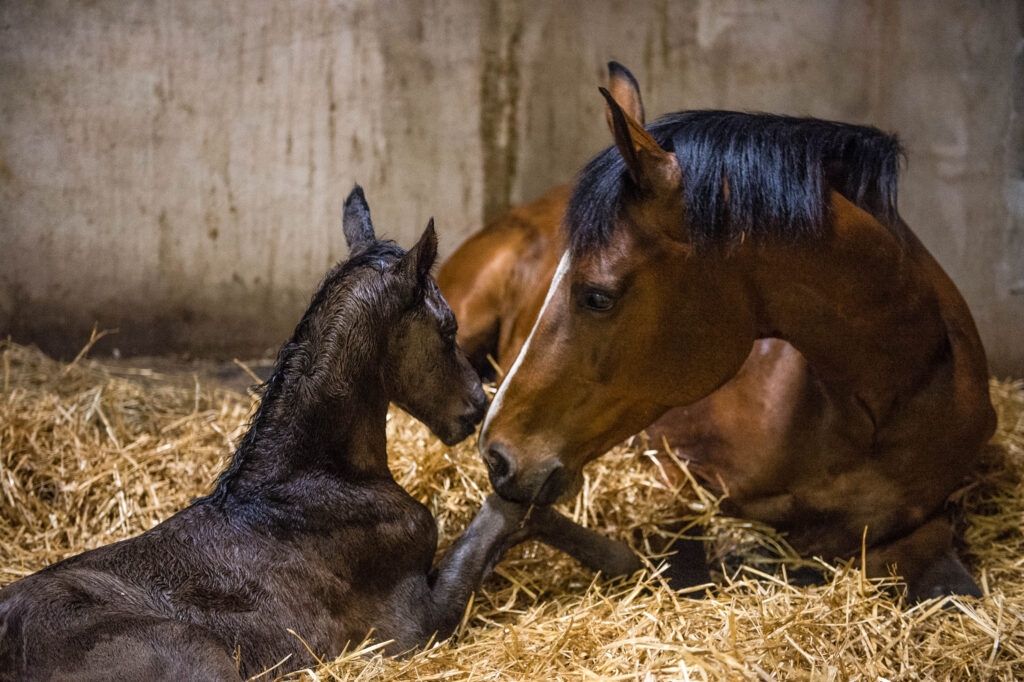
“Who decided that all Thoroughbreds would share a January 1 birthday?”
(Note: Applies to all Northern Hemisphere Thoroughbreds; Southern Hemisphere Thoroughbreds share a birth date of August 1)
Time for a brief history lesson…
The British turf traditions were brought over from England with the colonists and continued on well after the Revolutionary War ended in 1783. One of those traditions was recognizing May Day (May 1) as the birth date for racing Thoroughbreds. Racing didn’t really take place during the winter or spring in England, and it had been decided in the mid-1700’s that May 1 would be a universal birth date for Thoroughbreds.
However, racing was changing in Great Britain, and on April 25, 1833, members of The Jockey Club agreed that horses at their headquarters in Newmarket would share the birth date of January 1 instead of May 1. This only applied at Newmarket, though, as there were two factions of racing in England at the time: those who followed the ‘Newmarket rules’ and those whose officials came up with their own set of regulations.
January 1 wouldn’t be adopted countrywide until 1858.
Once the new date became widespread in Britain, some in America called for racing to follow suit, specifically the North. The South dug its heels in, though, and refused to change the date from May 1.
Thus, for a time, American racehorses celebrated their birth days on two different dates, depending on where they were born. The divide remained until after the Civil War ended in 1865, when the main focus of the sport shifted from the South to the North, specifically New York.
One of the first changes made was bringing Southern race horses in step with the North to make the official birthday January 1.
The above is just a brief summary; Nelson Dunstan wrote an in depth article that was printed in the January 12, 1948, edition of the Daily Racing Form. Special thanks to Tom Hall from The Blood-Horse and the Keeneland Library for their help.
Now to name the baby
How do horses get their names?
Owners have to get creative with horse names, since no two racing horses can share a name at the same time, according to the Jockey Club rule book. Horse names must be submitted to the Jockey Club no later than February of their second year. And it should go without saying, but horse names can’t be rude or inappropriate. There has certainly been a handful in history on the borderline, or that snuck in, but as a rule of thumb, it’s not a great idea.
Names also can’t be longer than 18 characters, including spaces, and must meet a variety of other conditions. The Jockey Club tosses about 30% of the names submitted. One of the most common naming techniques is to use the horse’s pedigree, incorporating the name of its father, or both father and mother. But names can come from anything — current events, a favorite pastime, a location or pop culture. Barbaro and his siblings got their name from a family painting of horses.
Here are the more specific rules for naming a horse: What’s in a Name: A Look at the Rules for Naming Thoroughbreds | News | Kentucky Derby
To Check this year’s Derby horses, enter their name in the search block at Thoroughbred Horse Pedigree Query and the five previous generations will appear. This will often reveal the reasoning behind the name. You can also put in a name you like to see if there is a horse by that name or a retired name that might be available as some names are on the Jockey Club Permanent List and cannot be used.

